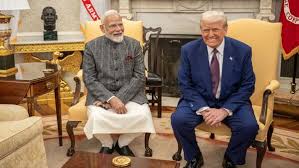The spectacular headline-hogging victory of billionaire tycoon and reality TV star Donald Trump, who took charge as the 45th president of the US on January 20, has unsettled the global consensus about America’s leadership and position in a conflicted and mutating world order.
Nearly all parts of the world, impacted by the US’ policies directly or indirectly, are speculating feverishly about the ramifications of the Trump presidency. The dominant sentiments are that of anxiety, befuddlement, uncertainty and unpredictability. These disparate worries and apprehensions can be coalesced and crystallised in the Trump Anxiety Index (TIA), which will rise and decrease in proportion to the policy and postures his presidency will adopt towards major cross-cutting issues.
The questions are proliferating by the day, but the Trump anxiety is more pronounced in some countries and regions of the world. On a scale of 1 to 10 on Trump Anxiety Index, China, Mexico and Pakistan will score high, maybe 7-8. By contrast, India scores low, maybe 3-4.
Why India is not so much worried about the Trump presidency? The answer to this all-important question is not all that esoteric. While there is some speculation about a possible reset in India-US relations in some areas, the picture is largely positive and optimistic, and it won’t be an exaggeration to say that there will be more continuity than disruption and potential subversion.
Looking ahead, the picture for India-US relations is largely optimistic, albeit the road ahead is fraught with some challenges and imponderables. Both George Bush Junior and President Obama had raised the bar for what the latter has called “the defining partnership of the 21st century,” and it is now up to President Trump to seize the initiative and leave his indelible imprimatur on this important relationship. Trump’s dream of Making America Again should blend with continued support for India’s rise, the ongoing project of making India great again. The hesitations of history, as PM Modi famously said, are well behind us, and it’s time for the world’s largest democracies to compose a new symphony amid challenges, uncertainty and free-floating anxiety. Read more…
Read More







